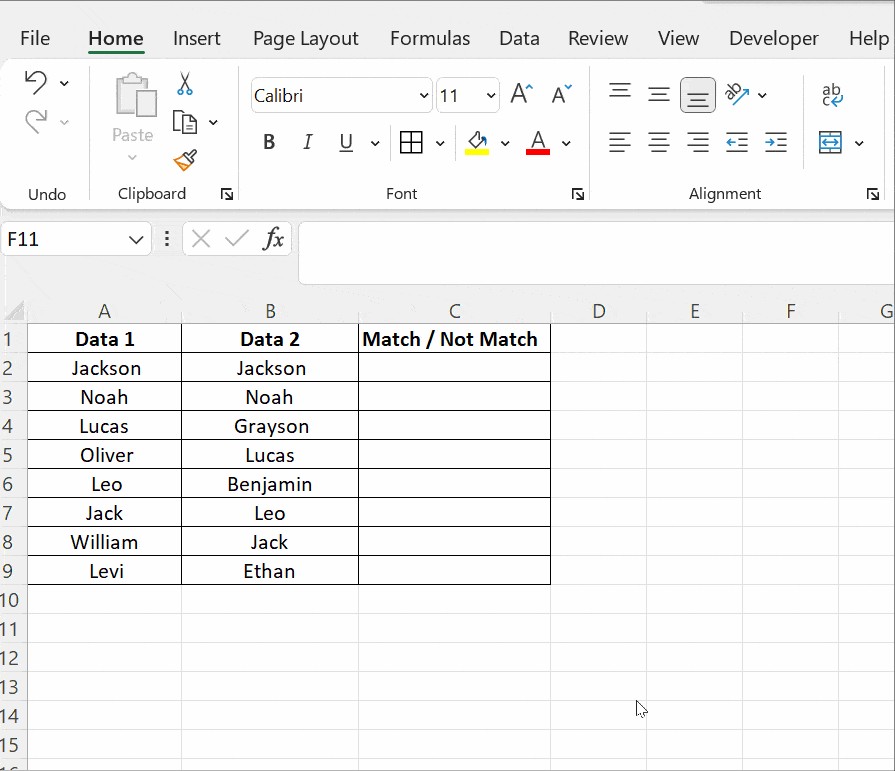Comparing data in Excel is a common task, especially when dealing with large datasets. Knowing how to efficiently compare two cells in Excel for matches can significantly speed up your workflow. This guide provides various techniques, from basic formulas to advanced functions and conditional formatting, to help you master cell comparison in Excel.
Simple Comparison with the Equals Operator
The most straightforward method to compare two cells is using the equals operator (=). For instance, to compare cell A1 with cell B1, you would enter the formula =A1=B1 in another cell. This formula returns TRUE if the values are identical and FALSE if they differ.
Utilizing the IF Function for Customized Results
The IF function allows for more customized comparisons. It follows the syntax =IF(logical_test, value_if_true, value_if_false). To compare A1 and B1 and display “Match” for identical values and “Mismatch” for different values, use =IF(A1=B1,"Match","Mismatch"). This provides clearer results than TRUE/FALSE.
Case-Sensitive Comparison with the EXACT Function
For case-sensitive comparisons, the EXACT function is essential. =EXACT(text1, text2) returns TRUE only if the text strings in both cells are identical, including capitalization. Combining this with the IF function, =IF(EXACT(A1,B1),"Match","Mismatch"), allows for precise case-sensitive matching.
Visualizing Matches with Conditional Formatting
Conditional formatting highlights cells based on specific criteria, providing a visual way to identify matches. Select the cells you want to compare, go to Home → Conditional Formatting → Highlight Cells Rules → Duplicate Values. Choose a formatting style to highlight matching cells. This method is especially helpful for quickly spotting patterns in large datasets. You can also highlight unique values to quickly identify differences.
Advanced Comparison with Lookup Functions
Lookup functions like VLOOKUP and INDEX-MATCH can compare cells across different ranges or tables. VLOOKUP searches for a specific value in one column and returns a corresponding value from another column in the same row. INDEX-MATCH offers more flexibility, allowing you to search in any direction and return values from any column.
Comparing Multiple Cells within a Row
To compare multiple cells within the same row, use the AND function nested within an IF function. =IF(AND(A2=B2,A2=C2),"Full Match","") returns “Full Match” only if A2 equals B2 and C2. Alternatively, the OR function can identify matches in any two cells: =IF(OR(A2=B2,B2=C2,A2=C2),"Match","").
Conclusion
Excel provides a powerful toolkit for comparing cells and identifying matches. By understanding these techniques – from basic operators to advanced functions and conditional formatting – you can efficiently analyze your data and extract valuable insights. Whether you’re working with small datasets or complex spreadsheets, mastering these methods will significantly enhance your Excel proficiency.
